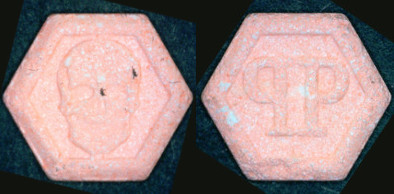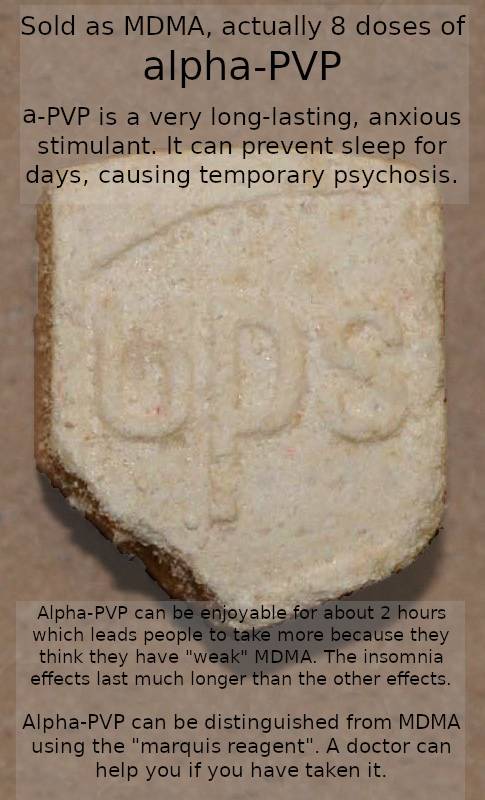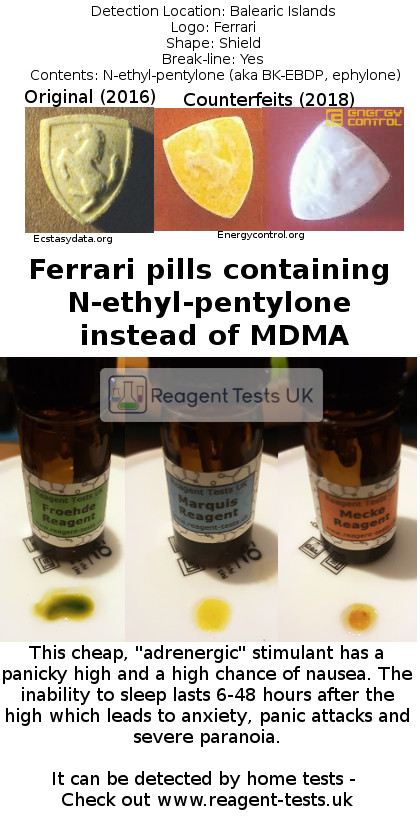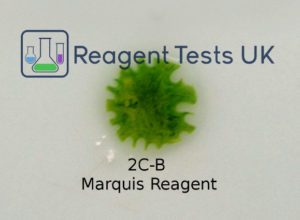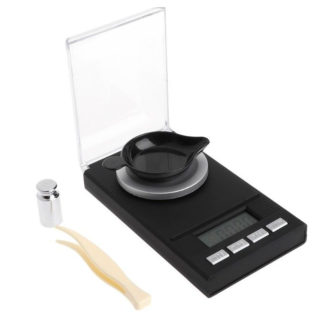White UPS ecstasy pills containing alpha-PVP from Manchester, UK
The pills are described as “badly made”. Read the history below for more information about why this might be. It is also possible that they are well made but have been exposed to moisture, which causes them to be crumble. Although this batch is known to be dangerous, it does not mean that batches which do not look like this will be less dangerous. You can determine if a pill contains a different drug instead of MDMA using Reagent Tests. It takes about 2 minutes and does not need special equipment. Each of the kits can be used for up to 40 tests.
Alpha-PVP is a long-lasting cathinone. It initially has pleasurable effects which lead people to think it is MDMA but these wear off quickly, causing people to take more. As more is taken, the anxious side effects build up. Each dose increases the time which a person will be unable to sleep for by about 6 hours. This is a severe problem as dosing through a whole party can prevent sleep for several days.
During this time the person will develop symptoms of severe sleep deprivation such as horrible anxiety, paranoia and eventually temporary psychosis. If you are suffering these effects then it is important to get sleep. See a doctor and show them this Reagent Tests UK blog, or this information from The Loop.
These pills contain 7-8x the normal dose of alpha-PVP which will massively increase the risks. As a stimulant, doses like this could cause a risk of heart complications as well as the other side effects. Carry on reading the blog post for more information about UPS pills and alpha PVP.
The history of UPS ecstasy tablets
UPS ecstasy tablets have been popular for a long time. They were among the first very high strength tablets to emerge in the 2010s and quickly obtained a reputation as being well made tablets with a large amount of MDMA in them. MDMA is the active ingredient that is supposed to be in all ecstasy tablets and people who use ecstasy pills will be seeking out those which contain only MDMA.
The market for MDMA tablets is, of course, completely unregulated and uncontrolled and there is nothing to stop sellers from being dishonest. Counterfeit tablets quickly begin to appear after a tablet gains a good reputation as less scrupulous manufacturers try to use the popularity to sell their own pills which might be weaker, may contain no MDMA or may even contain a completely different and potentially much more dangerous drug.
Compounding this issue is the ease with which pressing equipment for pills can be obtained. Ten minutes searching online easily reveals sellers of “tablet dies”, the moulds use to press tablet material into a tablet, for around £50.
So it doesn’t take much time or money for a pill to be cloned, and once it’s cloned the colour, shape and logo of an ecstasy tablet from someone else’s pill report tell us nothing about what’s in it. It’s impossible to tell from visual appearance if the pill is from a different batch, maybe even from a different manufacturer.
UPS pills are no different. The first test result on Ecstasydata.org is from May 2015. Within 8 months there is a clone which contains a mixture of drugs including caffeine and methamphetamine (“crystal meth”). Fast forward to 2019 and the original batch of UPS pills are long gone. Even half sensible manufacturers will not make UPS pills because they know that the reputation has been ruined by pill reports of bad UPS pills. The only manufacturers remaining are the most amateur available, looking to make some quick cash as easily as possible.
Hospitalisation
In the third week of January 2019 three teenage boys were taken to hospital in Manchester, UK with severe symptoms, one of which was put into an induced coma due to the risk. They had all taken “UPS” ecstasy tablets, thinking that they would contain MDMA. After police were able to submit the tablets for testing, they turned out to contain a completely different drug called “alpha-PVP”.
The lab was not able to determine the exact amount in the tablets but it is thought to be 7-8x a typical dose, which is a huge amount. Even drinking 7-8 cups of coffee in one go would cause problems, especially for a teenager.
What is Alpha PVP?
Alpha PVP is a stimulant from the cathinone family. While this family includes mephedrone, it is a very distant relative of mephedrone itself and has much higher risks attached. Alpha-PVP has been called “flakka” and “gravel” by media in the US but there is no evidence to suggest that people using the drug call it this.
Stimulants activate the body’s reward system to create a sense of wellbeing and make people talkative, and alter how the body manages alertness and rest, causing people to feel energetic and prevent sleep. They also significantly increase blood pressure, heart rate and cause sweating. In high doses, side effects become much more pronounced and the body finds it harder to excrete the drug out through its normal mechanisms. This is especially true with cathinones like alpha-PVP. Although the pleasurable effects last for about 2 hours, the drug lingers in fatty tissue for much longer. The more doses that are taken, the longer that the drug has a chance to build up and therefore the longer it is released back into the blood for, after people want the effects to stop.
People are tricked by the initial pleasurable effects of alpha-PVP into thinking they have just got “weak MDMA”. Not wanting the party to stop (and unknowingly compelled by the action of the drug on their reward system) they take some more. This cycle continues until the party is over, by which time the drug has been building up in the body for hours.
This becomes a huge problem as the drug prevents sleep, a vital recovery process for the body. Even without drugs, sleep deprivation can cause severe paranoia and temporary psychosis, but with a stimulant drug on board this happens MUCH faster. Coupled with the horrible comedown that cathinones cause, this can lead to intensely distressing and even very dangerous behaviour.
You can see the original warning issued by the Manchester Early Warning System here: UPS ecstasy pill alpha-pvp drug warning 2019

